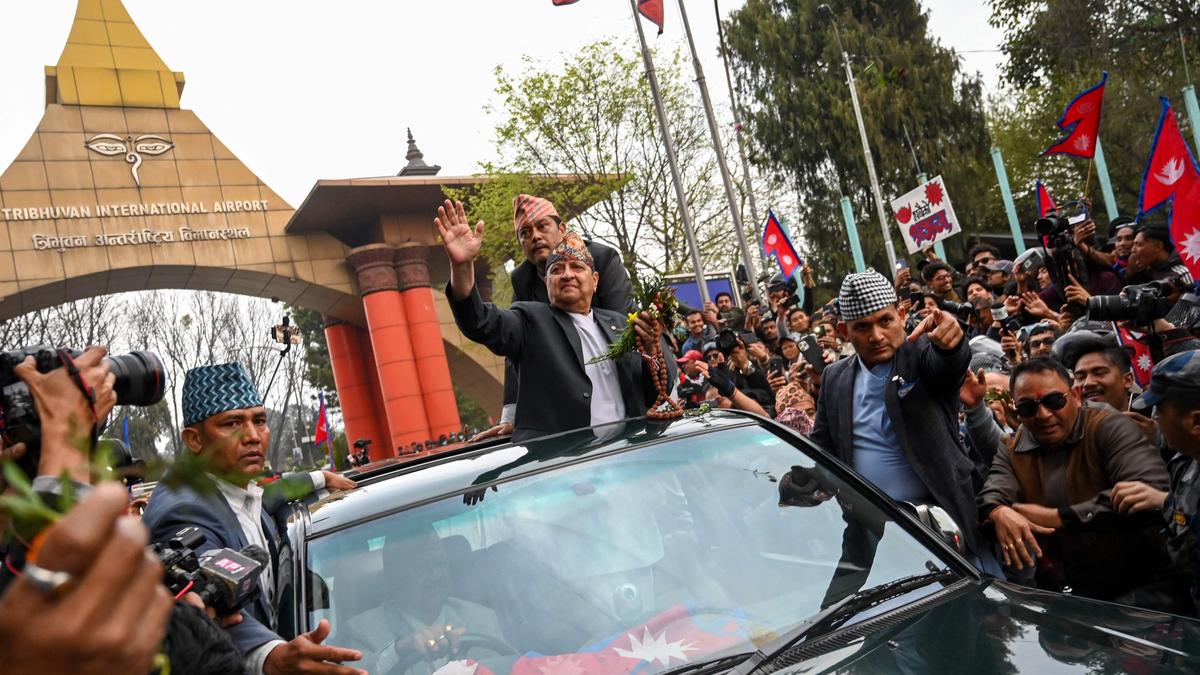
A rally, some ruffled feathers, and the republic on the defensive as monarchy debate resurfaces in Nepal Premium
The Hindu
Nepal's democratic journey from monarchy to republic faces challenges as calls for the return of the monarchy resurface.
In 1951, Nepal had its first tryst with democracy. An iconic hand-wave from a plane by Nepal’s King Tribhuvan in Kathmandu, returning from India seven and a half decades ago, is still synonymous with democracy. People chanted slogans hailing democracy. The airport was later named after him — Tribhuvan International Airport, which caters to both international and domestic flights.
Cut to 2025. On March 9, Tribhuvan’s grandson, Gyanendra, arrived at the same airport from the tourist town of Pokhara, some 200 km west of Kathmandu. He waved to his supporters as he stuck his head out from the sunroof of an SUV. This time, people who had gathered to welcome Mr. Gyanendra, dethroned in 2008, chanted slogans for the reinstatement of the monarchy.
Nepal transitioned into a republic 17 years ago on the wave of massive protests, with tens of thousands of people marching on the streets of Kathmandu in 2006, demanding the ouster of Mr. Gyanendra for his 2005 coup. Mr. Gyanendra capitulated, and with him, the 240-year-old monarchy ended in Nepal.
Estimated at 10,000-15,000 people, the rally on March 9 to welcome Mr. Gyanendra, observers and analysts say, was modest.
“But the point is all those who were there at the rally are not necessarily pro-monarchists,” says Sanjeev Uprety, a professor and writer. “There is widespread frustration among the public as the leaders in the new republic have failed to deliver. So the rally, to some, gave a platform to vent out their anger”.
In the past 74 years, Nepal’s democratic journey has been a bumpy ride. Tribhuvan’s son, Mahendra, committed a coup in 1960 to impose the unitary system of governance — Panchayat — which lasted 30 years. The 1990 movement restored democracy with the constitutional monarchy. Mr. Gyanendra’s 2005 coup failed to last long.
Revolving-door politics has been the bane of Nepal, with the same faces returning to power. There have been half a dozen government changes since 2015 when the country promulgated its new Constitution that guaranteed the republican system and 13 governments since 2008 when the monarchy was abolished.













